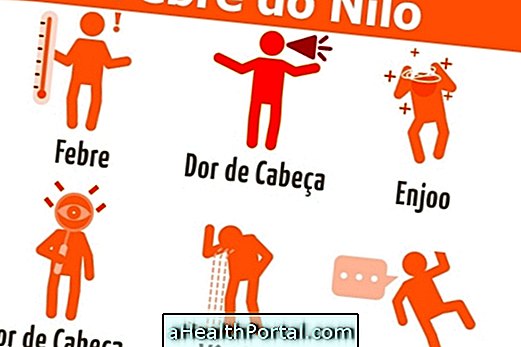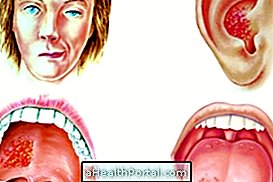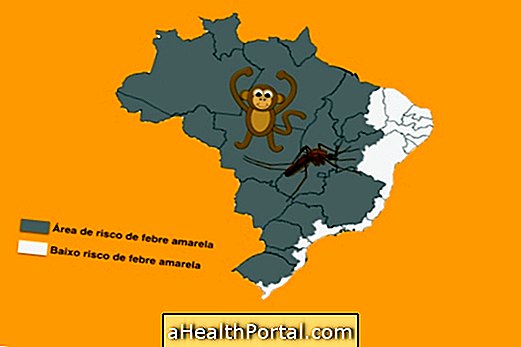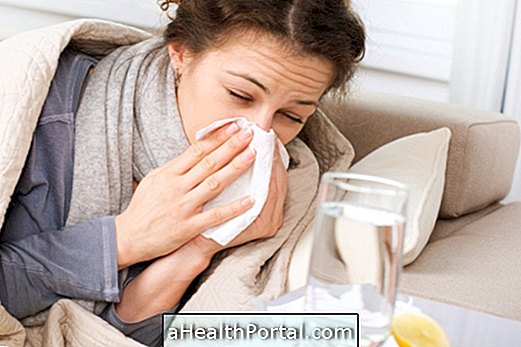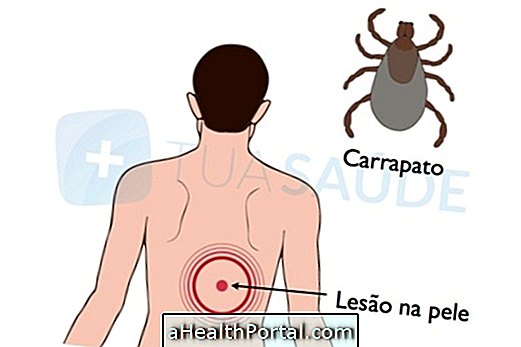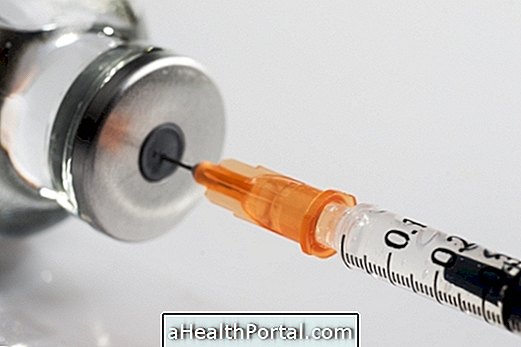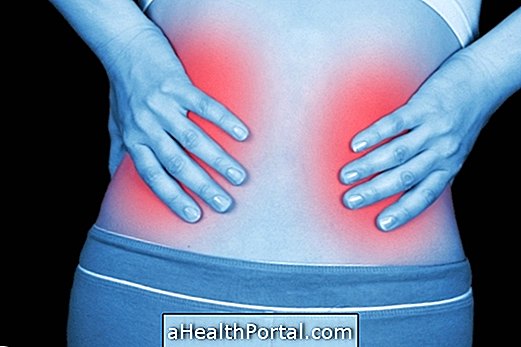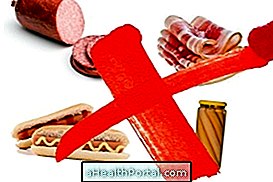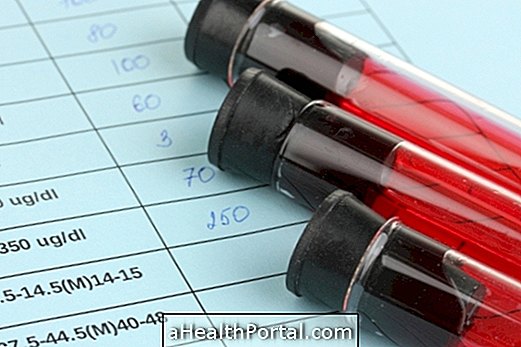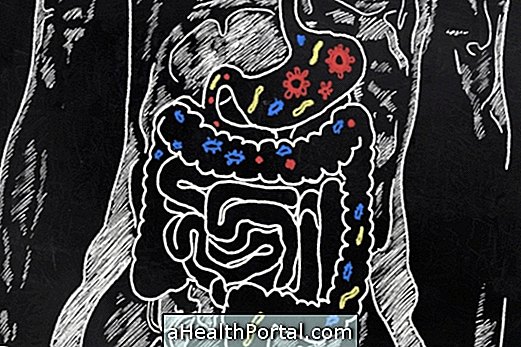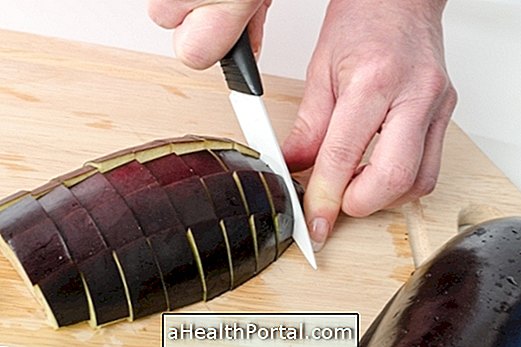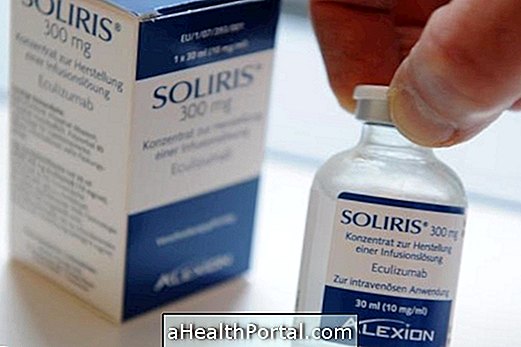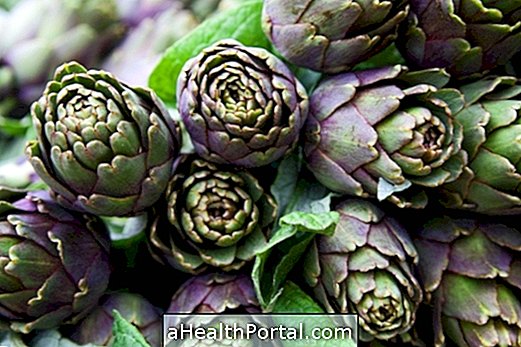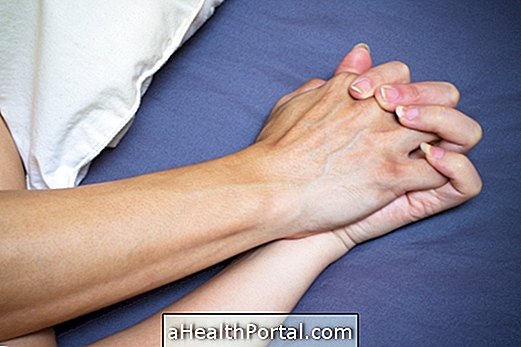Chikungunya is an arbovirus, also caused by Aedes aegypti, which has as its main complication the persistence of pain and swelling in the joints that can last for 3 months. However, there are reports that these symptoms can remain for 3 to 6 years, and there is also tendinitis and change in the sensitivity in the hands.
The symptoms of Chikungunya are fever and the intense pain in the joints, especially in the back that is the main differential of dengue. Symptoms usually appear 7 days after being bitten by the mosquito and last for 14 days. Joint swelling may occur up to 60 days after you have the disease.
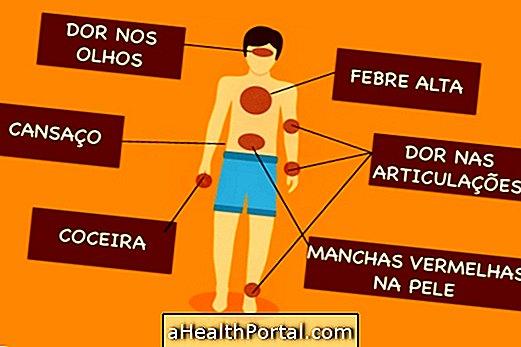
Main symptoms of Chikungunya
The typical symptoms of Chikungunya are:
- High fever, higher than 39º C that appears suddenly, this being the first symptom and lasts for 2 or 3 days;
- Intense pain and swelling in the joints that can affect the tendons and ligaments, which affects more than 90% of cases;
- Small red spots on the skin that appear on the trunk and throughout the body including the palms of the hands and soles of the feet that appear between 2 and 5 days after the onset of fever;
- Back pain and also in the muscles;
- Itching all over the body or only on the palms of the hands and soles of the feet, in this case there may also be peeling of the skin on these parts of the body;
- Excessive tiredness;
- Hypersensitivity to light;
- Constant headache;
- Vomiting, diarrhea, abdominal pain, which are more common in children;
- Chills;
- Redness in the eyes;
- Pain behind the eyes.
In women, the following symptoms appear especially: red spots on the body, vomiting, bleeding and mouth sores. While in men and in older people it is more common to appear: pain and swelling in the joints and the fever can last longer.

Symptoms of chronic Chikungunya
After the persistence of joint pain for more than 3 months, it is said that the person is in the chronic phase of the disease. Other symptoms that may occur at this stage are:
- Loss of hair;
- Sensation of numbness in some regions of the body;
- Raynaud's Phenomenon, characterized by cold hands and purplish fingertips;
- Sleep disturbances;
- Difficulties of memory and concentration;
- Blurred or blurred vision
- Depression.
The chronic phase can last up to 6 years and the doctor may indicate the use of other remedies to treat these other symptoms, as well as physical therapy sessions for pain relief and improvement of movement.
Signs and symptoms of severity
In rare cases Chikungunya manifests itself without fever and without pain in the joints, but the following changes may appear that indicate that the disease is serious and the person needs to be hospitalized:
- In the nervous system: convulsions, Guillain-barré syndrome (characterized by loss of muscle strength), loss of movement with arms or legs, tingling;
- In the eyes: Optic inflammation, iris or retina, which can become severe and compromise vision;
- In the heart: Heart failure, arrhythmia and pericarditis;
- On the skin: Darkening of certain areas, appearance of aphthous-like blisters or ulcers;
- In the kidneys: Inflammation and renal failure.
- Blood complications, pneumonia, respiratory failure, hepatitis, pancreatitis, adrenal insufficiency, and increased or decreased antidiuretic hormone.
These symptoms are rare but can happen in some people being caused by the virus itself, by the immune system response of the person or due to the use of the medication.
How to confirm the diagnosis
The diagnosis can be made by a general practitioner through a blood test that helps guide the treatment of the disease.
Click here and find out how the exams for Chikungunya
For the diagnosis of chikungunya fever, tests can be performed. The changes that may be present are:
- Leukopenia with lymphopenia less than 1, 000 cels / mm3 (common)
- Thrombocytopenia less than 100, 000 cels / mm3 (rare)
- Elevated erythrocyte sedimentation rate and C-Reactive Protein
- Hepatic enzymes, cretinin and creatine phosphokinase (CPK) are discretely elevated.
The disease is confirmed when the patient presents characteristic symptoms in times of epidemic; when you visited endemic sites up to 2 weeks before the onset of symptoms and also through confirmation:
- From virus isolation exams, PCR,
- Presence of IgM antibodies collected during the presence of symptoms
- When there is an increase of up to 4 times the amount of antibodies, which can be observed between 15 and 45 days after the onset of symptoms or 10 to 14 days in the acute phase;
- Presence of antibodies through plaque reduction neutralization test (PRNT).
Not all patients need to undergo these tests, which should be requested when there are atypical symptoms or in severe cases.
It is important to know how to differentiate CHIKV from other diseases that can cause similar symptoms such as: Dengue, which is the main suspect, or others such as Septic Arthritis, Malaria, Leptospirosis and Rheumatic Fever. For differentiation one must take into account the epidemic periods and other characteristic symptoms of other diseases.
It may be malaria when the patient has been in endemic areas, and leptospirosis is suspected when the patient has been in contact with floodwaters or has professions such as a garbage dump or mason and presents pain in the calves. It may be rheumatic fever when there are symptoms such as neck pain that should be investigated through examining the oropharynx, which shows Streptococcus, and the possibility of septic arthritis when there was a history of local trauma.
Up to 30% of infected people do not have any symptoms and the disease is discovered in a blood test, which can be requested for other reasons.
Here are the symptoms of similar diseases:
- Learn the main symptoms of Dengue
- How to know if you have Zika virus
Chikungunya transmission
The main form of transmission of chikungunya is through the bite of the mosquito Aedes Aegypti, which is the same that transmits dengue. However, when the mother is in labor and bitten by the mosquito, the baby can be contaminated through the placenta.
This disease, similar to dengue, Zika and Mayaro do not go from one person to another.
How to treat Chikungunya
The treatment lasts from 15 days to 1 month and is done with the use of fever remedies such as Paracetamol or Dipirone, which is sufficient to control fever, tiredness, headache and blemishes on the skin. In cases of extreme pain the doctor may indicate the use of tramadol, codeine or prednisone.
The duration of treatment depends on the age of the infected individual, and young people take an average of 7 days to heal, while the elderly can take up to 3 months because they are at increased risk of developing arthritis. Here are some home remedies that may help in the treatment of chikungunya fever.
Putting cold compresses on the joints and resting is important to reduce the risk of the disease becoming chronic and staying for years. The compresses can be placed every 4 hours with duration of 20 minutes.
When the pains caused by Chikungunya do not cease within 1 month it is recommended to follow the treatment with physiotherapy sessions.
Chikungunya in pregnancy and in babies
Symptoms and form of treatment during pregnancy are the same but the disease can pass to the baby during childbirth, there is a risk of 50% of the baby being infected, however very rarely can abortion occur.
The baby when it is contaminated can present symptoms like fever, not to nurse, to have swelling in the extremities of the hands and feet, as well as spots on the skin. Despite the child's lack of appetite she should continue to be breastfed because the virus does not pass through breast milk. In children less than 2 years old, the doctor may decide that the child is hospitalized for treatment at the hospital.
Chikungunya fever in newborn infants can be serious leading to serious complications because the central nervous system can be affected with possible seizures, meningoencephalitis, cerebral edema, and intracranial hemorrhage. Hemorrhages and heart involvement with ventricular dysfunction and pericarditis may also occur.
Can Chikungunya lead to death?
Although rarely lead to death Chikungunya fever can be serious in people who have diseases such as uncontrolled diabetes or other chronic diseases, especially affecting the elderly elderly.
Other diseases that can cause complications in the case of Chikungunya are asthma, heart failure, sickle cell anemia, thalassemia, hypertension and rheumatic diseases.
The use of medications that can cause complications are aspirin, anti-inflammatories and paracetamol when used in large doses for relief of symptoms and so it may be helpful to adopt home-based strategies for symptom relief.
